Wherein I whine about writing, and think out loud. Main blog: foxmonkey // Queen blog: astrophysicist-guitar-god
Don't wanna be here? Send us removal request.
Text
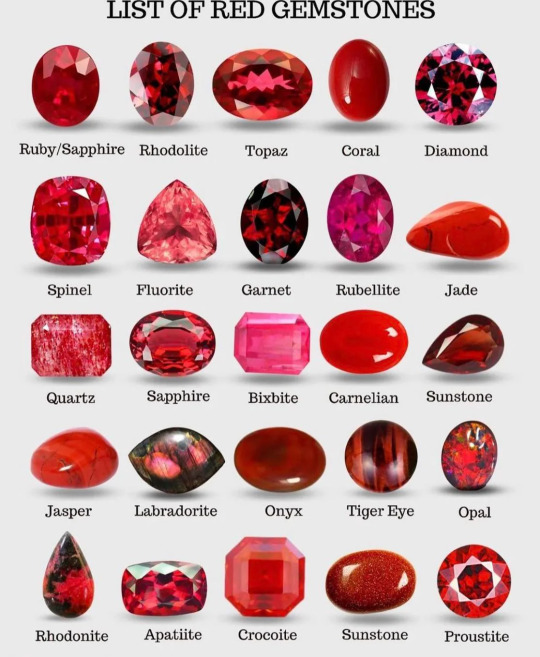
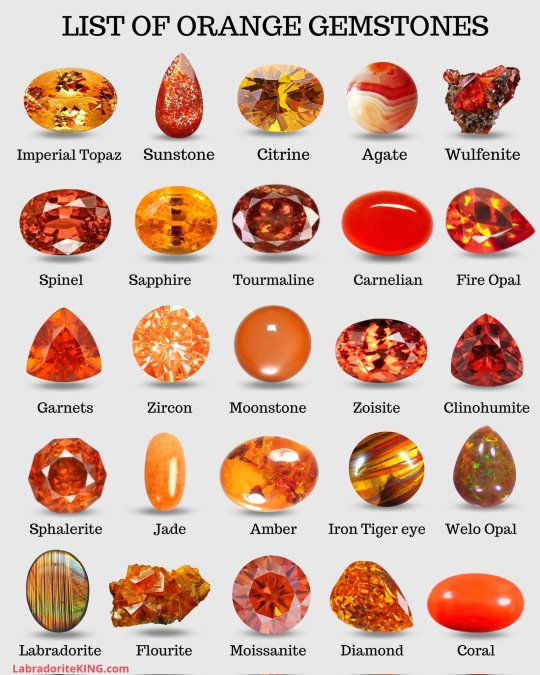
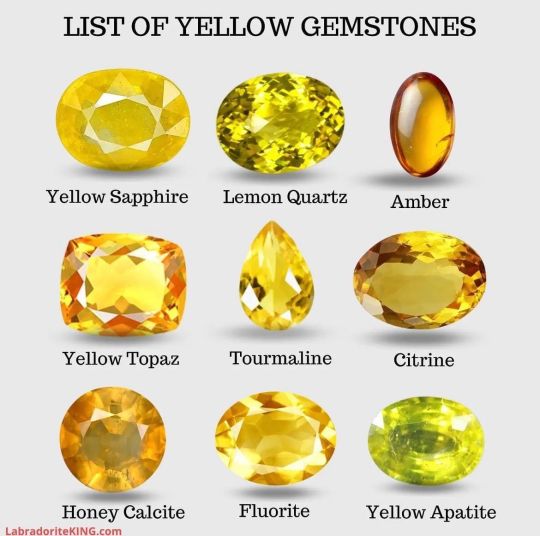
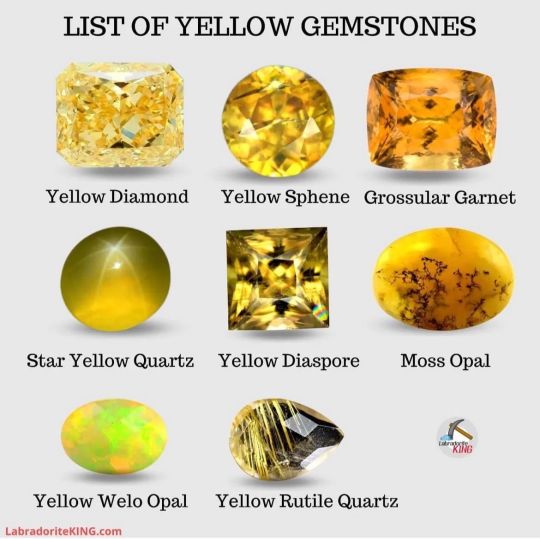
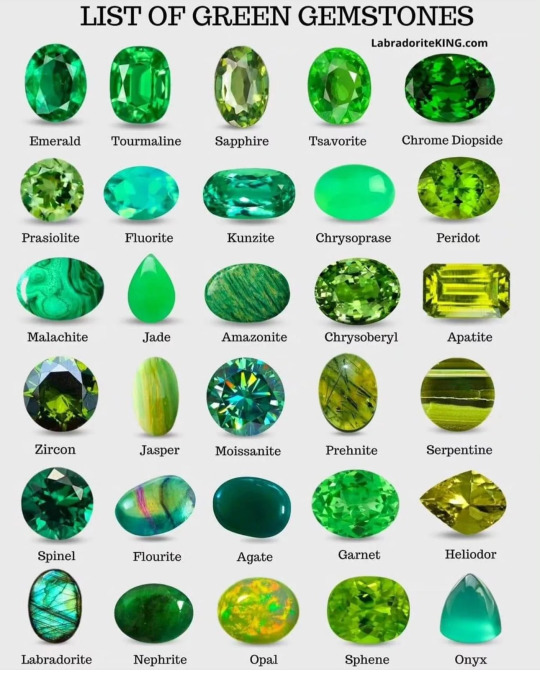
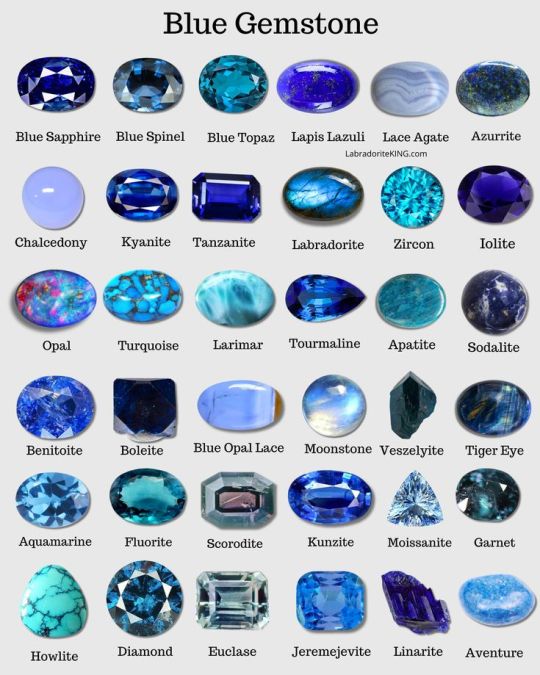
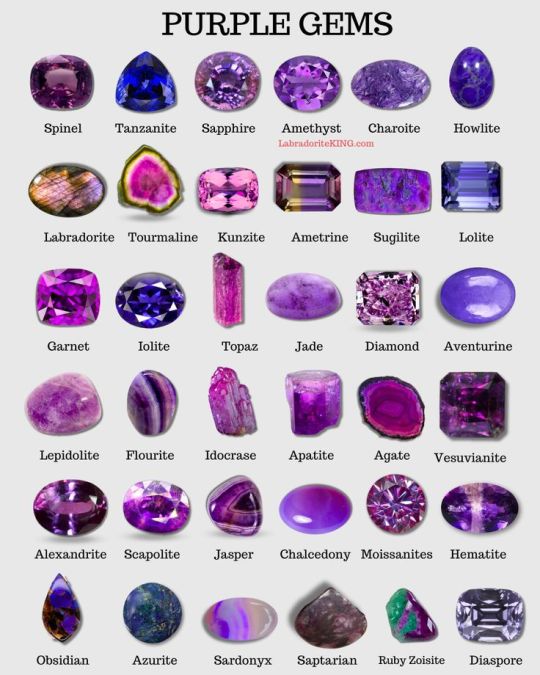
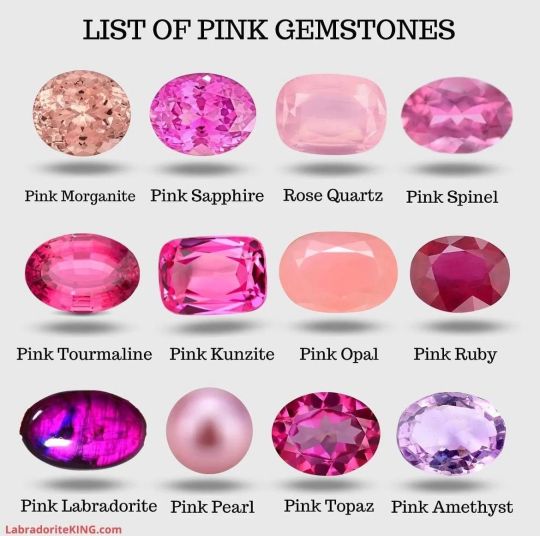
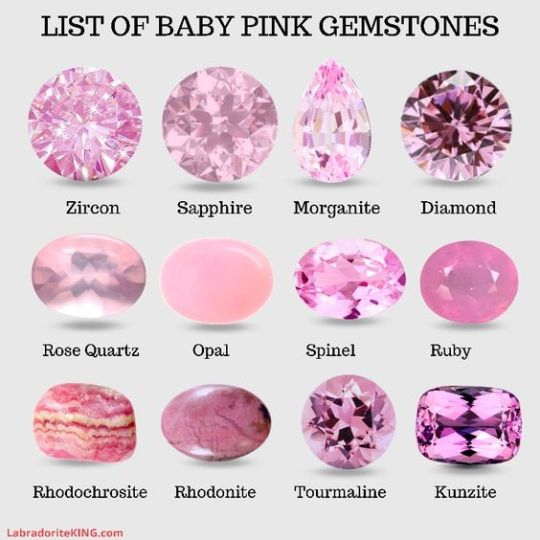
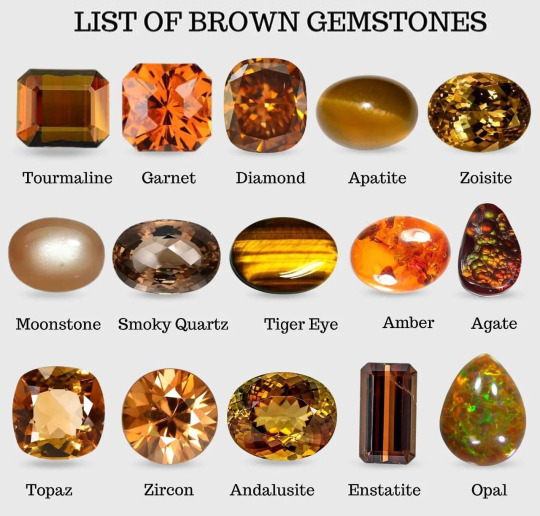
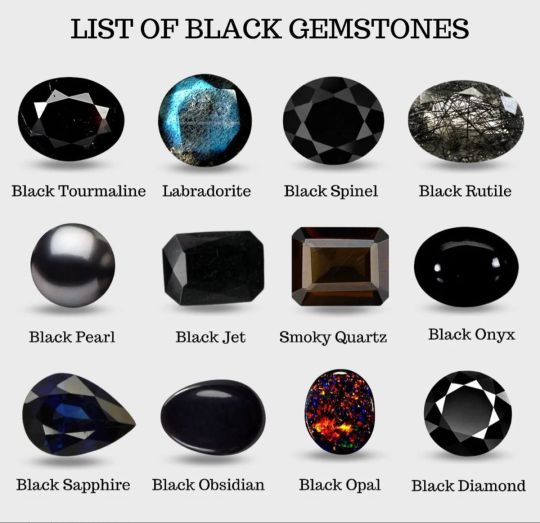

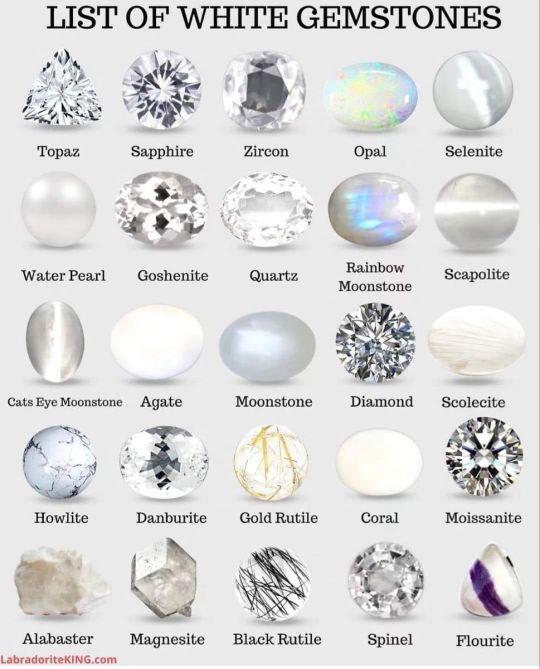
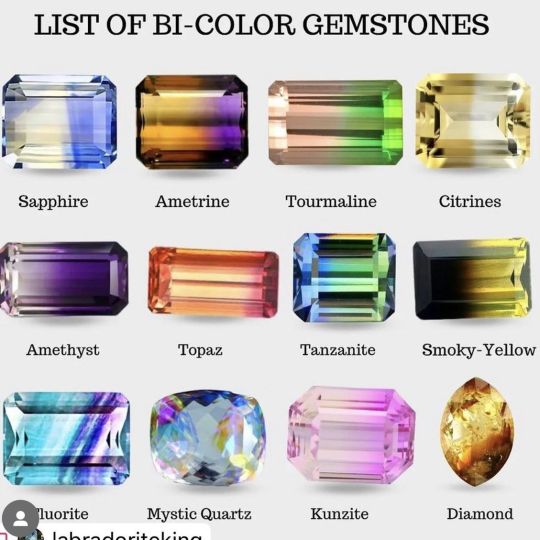
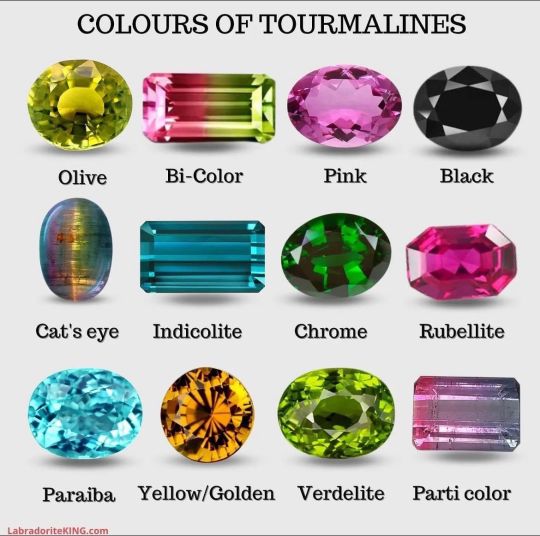
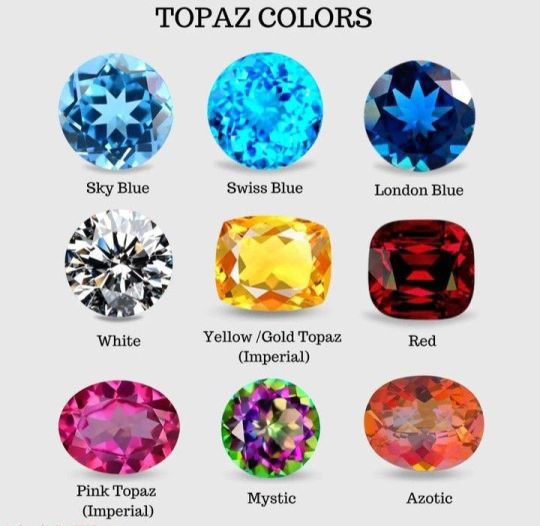

By LabradoriteKing on Pinterest
170K notes
·
View notes
Text
Helpful Websites & Apps for Writers

A list of helpful websites, apps, and other resources for writers and writing.
Websites for Writers A list of different writing resources, such as online writing communities, research help, free online writing courses, and free writing worksheets.
NaNoWriMo Alternatives A list of different online writing communities and word tracking tools.
Online Writing Communities A tumblr thread with a short list of online writing communities. Includes a writing website for fantasy and science fiction writers, and a website for offering and receiving critique on writing.
Helpful Sites for Writers A short list of helpful resources for writers. Includes websites for character names, an online age calculator, an online height comparison tool, a slang dictionary, and a website to check the weather anywhere in the world.
53 Best Tools for Writers A detailed list of online tools, websites, and apps for writers. Includes both free and paid apps and programs. Note: Please do your research, as a few of the listed websites/apps appear to use generative AI.
Creative Writing Tools A lengthy, detailed list of several resources for writers, including writing apps and programs, online dictionaries, online writing courses, ambient noise websites, image websites, and online PDF tools. Note: Please do your research. There is an entire section of generative AI websites/apps.
The 23 Best Writing Tools of 2025: A Guide for Writers A lengthy, detailed list of different writing programs and apps, online organization and productivity tools, and online editing tools. Includes both free and paid apps and programs. Note: Please do your research, as a few of the listed websites/apps appear to use generative AI.
The Best Book Writing Software A list of different writing programs and apps. Includes both free and paid apps and programs. Each review includes the software’s pros and cons.
For more helpful websites for writers, check out some others I’ve shared: Dictionary & Thesaurus Names for Your Characters Detailed Character Profiles
+
I’m a writer, poet, and editor. I share writing resources that I’ve collected over the years and found helpful for my own writing. If you like my blog, follow me for more resources! ♡
578 notes
·
View notes
Text
Your First Draft Is Not A Draft
When writing a book, your first draft shouldn’t be treated as a draft, especially not when you’ve completed it. So what do you consider it?
A reference
The purpose of the first draft isn’t to be good, its purpose is to simply exist. I’m sure you’ve heard this before, but what it means is that you’re wasting your time if you have to spend hours worrying over the perfect wording or the best imagery or anything else you’d find in a ‘writing tips’ video. Consider the first draft like in-depth plotting; you put your plot into actual words
So what do you do with your ‘first draft’ if it’s supposed to be a reference?
Rewrite it
Not from scratch! This is why you have the reference; you can see exactly where you’re going as opposed to asking yourself what happens next or how you can connect point A to point B. You know what happens, how it happens and why it happens, now you just word it better. This is where you add prose, vivid imagery, all the fun stuff that makes a book good
And by actively rewriting the whole thing, you’re actively engaging with the writing, not just skimming it, and it’s easier to make yourself reword large chunks of it rather than just saying “Meh, good enough” and moving on. You’ll more easily see redundancy, you’ll be able to adjust your word count more easily, etc etc
First drafts are references, second drafts are where the magic starts to happen!
81 notes
·
View notes
Text
Some of my writer’s block cures:
Handwrite. (If you already are, write in a different coloured pen.)
Write outside or at a different location.
Read.
Look up some writing prompts.
Take a break. Do something different. Comeback to it later.
Write something else. (A different WIP, a poem, a quick short story, etc.)
Find inspiring writing music playlists on YouTube. (Themed music, POV playlists, ambient music, etc.)
Do some character or story prompts/questions to get a better idea of who or what you’re writing.
Word sprints. Set a timer and write as much as you can. Not a lot of time to overthink things.
Set your own goals and deadlines.
Write another scene from your WIP. (You don’t have to write in order.) Write a scene you want to write, or the ending. (You can change it or scrap it if it doesn’t fit into your story later.)
Write a scene for your WIP that you will never post/add to your story. A prologue, a different P.O.V., how your characters would react in a situation that’s not in your story, a flashback, etc.
Write down a bunch of ideas. Things that could happen, thing that will never happen, good things, bad things.
Change the weather (in the story of course.)
Feel free to add your own.
19K notes
·
View notes
Text
Everything You Need To Know Before Editing Your Manuscript
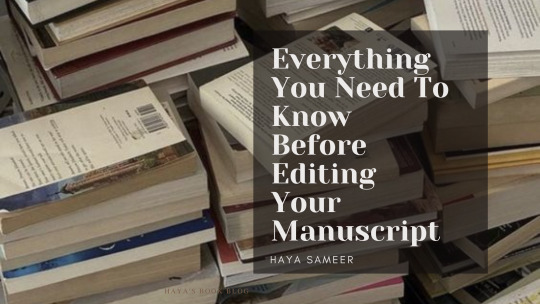
Finishing your manuscript is a big accomplishment, but that’s only the start of your writing journey. Now that you have a manuscript to work with it’s time to start your editing process and perfect your story. Editing might sound easy enough, but it involves a lot more than just correcting your SPAG.
If you’re a new author unsure about how to start editing your manuscript, here’s everything you need to know, from a self-published author.
Self-Editing: The First Step
Editing your own work can be both challenging and rewarding. When you take on the role of a self-editor, you gain a deeper understanding of your writing and the opportunity to refine it to its fullest potential. Self-editing helps ensure you cut down on noticeable mistakes before sending it out to an actual editor so that you can receive more productive feedback.
I would honestly hate having to pay someone just for them to tell me ‘you misspelt xyz’ which is something I could have caught with a quick read-through. Once you’ve finished your manuscript here’s how you can start off with some self-editing:
1. Take a Break Before You Start
After completing your initial draft, it's crucial to distance yourself from your work. Give it some time to breathe. This break can be a few days or even weeks, depending on your schedule. When you return to your manuscript, you'll approach it with a fresh perspective.
2. Read Your Manuscript Aloud
One of the most effective self-editing techniques is reading your work aloud. This process helps you identify awkward sentences, pacing issues, and grammatical errors that might go unnoticed when reading silently. It also allows you to hear the flow of your writing and the nuances of your character's voices.
3. Focus on SPAG (Spelling, Punctuation, and Grammar)
Before delving into more complex edits, address SPAG issues. Look out for common mistakes such as typos, subject-verb agreement errors, and misused punctuation. Utilize grammar and spell-check tools, but don't rely solely on them.
4. Assess Overall Structure and Flow
Consider the broader structure of your manuscript. Does the plot progression make sense? Are there any plot holes or inconsistencies? Verify that your story flows smoothly from beginning to end. Ensure that transitions between scenes and chapters are seamless.
5. Dive into Character Development
Characters are the heart of your story. Analyze each character's arc, motivations, and growth throughout the narrative. Ensure that their actions and dialogue are consistent with their personalities and the story's themes.
6. Refine Your Writing Style
Pay attention to your writing style and voice. Is it consistent throughout the manuscript? Make sure your unique voice shines through, and refine your prose to eliminate unnecessary repetition or verbosity.
7. Trim Excessively Long Sentences
Long, convoluted sentences can confuse readers and disrupt the flow of your narrative. Identify and break down lengthy sentences into more manageable segments.
8. Seek Feedback
Consider sharing your work with beta readers or critique partners at this stage. Fresh perspectives can uncover blind spots and provide valuable insights for improvement.
Remember that self-editing is an iterative process. After completing these initial rounds of edits, repeat the process as necessary until you're satisfied with the manuscript's quality
Types of Editing
When editing their manuscript authors often direct their focus to the way things are written and then call it a day. However, SPAG corrections are only the start of your editing process. Unsure of other ways to better your manuscript? Here are some types of editing I think every author should consider when self-editing:
SPAG Editing (Spelling, Punctuation, and Grammar)
SPAG editing, often considered the foundation of all editing, involves meticulously combing through your manuscript to correct spelling, punctuation, and grammatical errors. This stage is essential for ensuring the clarity and professionalism of your writing.
Tips for Effective SPAG Editing
Use Spell-Checkers Wisely: While spell-check tools can catch many errors, they're not foolproof. Pay close attention to context; for instance, "their" and "there" are both valid words but have distinct meanings.
Proofread Carefully: Rely on your eyes and proofread your work systematically. Reading backward, from the end to the beginning, can help you catch spelling errors.
Punctuation Matters: Proper punctuation enhances clarity. Study punctuation rules, including the use of commas, semicolons, and quotation marks.
Avoid Homophone Confusion: Homophones, such as "your" and "you're" or "its" and "it's," can trip up even experienced writers. Double-check these tricky pairs.
Consistency is Key: Be consistent in your use of tense, style, and formatting throughout your manuscript.
Consider a Style Guide: Depending on your project, adhere to a specific style guide like AP Style, Chicago Manual of Style, or your publisher's guidelines.
Line Editing
Line editing is where the magic of storytelling truly begins to shine. This stage of editing goes beyond correcting surface-level errors and focuses on enhancing the overall writing style, clarity, and impact of your prose.
Tips for Effective Line Editing
Sentence Structure: Evaluate sentence length and structure. Vary sentence lengths to maintain reader interest. Look for run-on sentences and fragments.
Word Choice: Opt for strong, precise verbs and nouns. Eliminate unnecessary adverbs and adjectives. Avoid clichés and overused expressions.
Consistency in Tone: Ensure the tone of your writing remains consistent throughout the manuscript. Be aware of shifts in tone that may disrupt the reader's experience.
Show, Don't Tell: Replace telling phrases with descriptive scenes and actions to immerse readers in your story. For example, instead of saying "She was nervous," show her trembling hands or racing heart.
Dialogue Polishing: Make sure your characters' dialogue sounds authentic and serves the story. Remove redundancies and refine conversations to convey subtext effectively.
Eliminate Repetition: Identify and eliminate unnecessary repetition, both within sentences and across paragraphs.
Read for Rhythm: Pay attention to the rhythm of your writing. Read your sentences aloud to ensure they flow smoothly and have a pleasing cadence.
Example: Line Editing in Action
Before: "He walked slowly into the dark room, and it was filled with an eerie silence."
After Line Editing: "He tiptoed into the dark room, which echoed with an eerie silence."
Line editing transforms a plain sentence into a more evocative and engaging one.
Plot and Structure Editing
Plot and structure editing is where the big picture of your manuscript comes into focus. It involves assessing the overall narrative flow, character arcs, and thematic coherence of your story. This stage ensures that your readers will be captivated by your tale from beginning to end.
Tips for Effective Plot and Structure Editing
Plot Evaluation: Review your plot to identify any inconsistencies, gaps, or unresolved subplots. Ensure that your story has a clear and engaging trajectory.
Character Arcs: Analyze the development of your characters. Verify that they experience growth, change, or transformation throughout the story. Characters should face challenges and evolve as a result.
Pacing: Assess the pacing of your narrative. Balance action scenes with moments of reflection. Avoid overly slow or rushed sections that may disengage readers.
Transitions: Ensure smooth transitions between scenes and chapters. Use transitional elements like hooks, cliffhangers, or thematic connections to maintain reader interest.
Foreshadowing: Check for effective foreshadowing to create anticipation and intrigue. Ensure that events and revelations are set up in advance to make them more satisfying for readers.
Climax and Resolution: The climax should deliver on the story's promises and conflicts. The resolution should tie up loose ends while leaving room for reader interpretation.
Character Development Editing
Character development editing is the key to creating characters that readers will connect with, empathize with, and remember long after they've finished your book. This type of editing focuses on making your characters three-dimensional and integral to your story.
Tips for Effective Character Development Editing
Character Profiles: Create detailed character profiles that include physical attributes, personality traits, backgrounds, motivations, and flaws. Refer to these profiles as you edit to ensure consistency.
Character Arcs: Analyze each character's journey throughout the story. Ensure that they experience growth, change, or development in response to the plot's events.
Dialogue Authenticity: Pay attention to character dialogue. Each character should have a distinct voice and speaking style that aligns with their personality.
Internal Conflict: Explore each character's internal conflicts, desires, and fears. These internal struggles add depth to their characterization.
External Conflict: Consider how characters interact with one another and their external conflicts. Ensure that their actions and decisions are in line with their personalities.
Consistency: Maintain consistency in character behavior, beliefs, and values throughout the story. Avoid abrupt character shifts unless they are well-motivated and explained.
Style and Voice Editing
Style and voice editing is the stage where your writing truly becomes distinctive and memorable. It involves refining your unique writing style and ensuring that your narrative voice shines through consistently.
Tips for Effective Style and Voice Editing
Identify Your Writing Style: Reflect on your writing style. Are you descriptive and poetic, or concise and direct? Understand your natural tendencies.
Consistency is Key: Ensure that your writing style remains consistent throughout the manuscript. Abrupt shifts in style can be jarring to readers.
Narrative Voice: Identify your narrative voice. Is it first-person, third-person limited, or omniscient? Make sure your chosen narrative perspective aligns with the story's needs.
Character Voices: Pay attention to the unique voices of your characters. Each character should have a distinct way of speaking and thinking, contributing to the overall narrative texture.
Finding a Professional Editor
Writing a book is a deeply personal journey, but when it comes to the final steps of polishing your manuscript, it's essential to bring in a fresh perspective. This is where a professional editor comes in. They can help transform your work from good to outstanding, ensuring that it's ready to captivate readers. In this section, we'll explore how to find the right editor for your project.
When to Consider Hiring a Professional Editor
While self-editing and feedback from beta readers and critique partners are valuable, there comes a point when seeking professional editing assistance is crucial. Here are some key indicators that it's time to hire a professional editor:
After Self-Editing: Once you've gone through multiple rounds of self-editing and received feedback from beta readers, it's time to consider professional editing. You've taken your manuscript as far as you can on your own.
Before Publishing: Professional editing is essential if you plan to publish your work, whether traditionally or through self-publishing. It ensures your manuscript is in top shape, ready to impress agents, publishers, or readers.
For Complex Projects: If your project is particularly complex or requires specialized knowledge (e.g., technical writing, academic papers, historical accuracy), a professional editor with expertise in that area may be necessary.
Types of Professional Editing Services
Professional editors offer various types of editing services, each addressing different aspects of your manuscript. Here's an overview of the most common types:
Developmental Editing: This type of editing focuses on the big picture. Developmental editors help you shape your story, refine your characters, and ensure your plot flows smoothly.
Line Editing: Line editors dive into the nuances of your writing. They focus on improving sentence structure, style, and narrative flow, making your prose shine.
Copyediting: Copyeditors are meticulous about grammar, spelling, punctuation, and consistency in style and formatting. They ensure your manuscript is error-free and conforms to industry standards.
Proofreading: The final stage of editing, proofreading checks for typos, formatting errors, and minor issues that may have been missed in earlier rounds of editing.
How to Choose the Right Editor
Finding the right professional editor is a crucial step in your publishing journey. Here's how to make the best choice:
Research: Look for editors with experience in your genre. Explore their portfolios and read client testimonials. A track record of successful projects is a good sign.
Sample Edit: Many editors offer a sample edit or consultation. Use this opportunity to assess their compatibility with your manuscript. Check if their editing style aligns with your vision.
Communication: Clear and effective communication with your editor is paramount. They should understand your manuscript's genre, themes, and your specific goals for the project.
Budget: Get quotes from multiple editors and consider your budget. Editing can be an investment, but it's essential to find a balance between quality and cost.
Contracts: Before starting the editing process, sign a clear contract that outlines the scope of work, deadlines, fees, and any additional services. A well-defined agreement protects both you and the editor.
Choosing the right professional editor is a partnership that can significantly impact the quality of your manuscript. Take your time, do your research, and find someone who truly understands your work.
Editing Tools and Software
In the digital age, writers have access to a wealth of editing tools and software that can significantly simplify the editing process. These tools not only help catch grammar and spelling errors but also provide valuable insights into your writing style.
1. Grammarly
Grammarly is a widely recognized and user-friendly tool that checks your writing for spelling, grammar, punctuation, and style errors. It provides real-time suggestions as you write in various platforms, including web browsers, Microsoft Word, and Google Docs. Grammarly's premium version offers more advanced features like style improvements and plagiarism checks.
2. ProWritingAid
ProWritingAid is an all-in-one writing assistant that goes beyond simple grammar checks. It offers in-depth reports on readability, overused words, style issues, and more. The tool integrates with popular word processors and even has a Scrivener plugin for authors who use this writing software.
3. Hemingway Editor
Named after the renowned writer Ernest Hemingway, this tool helps you simplify your writing. Hemingway Editor highlights complex sentences, common writing errors, and suggests alternatives to improve readability. It's particularly useful for authors aiming for clear and concise prose.
4. Scrivener
Scrivener is a comprehensive writing and editing software designed for authors. It provides a flexible workspace to organize your manuscript, research materials, and notes. While Scrivener isn't an editing tool in the traditional sense, its robust features can streamline your editing process.
5. Google Docs
Google Docs is a versatile cloud-based platform for collaborative writing and editing. It offers real-time collaboration, commenting, and revision history tracking. Authors can easily share their work with beta readers, critique partners, or professional editors.
6. AutoCrit
AutoCrit specializes in helping authors improve their fiction writing. It analyzes your manuscript for issues like pacing, dialogue, and repetition. It provides recommendations to enhance your storytelling and writing style.
7. Hemingway App
Similar to Hemingway Editor, the Hemingway App identifies complex sentences, adverbs, and passive voice in your writing. It offers immediate feedback to help you simplify and clarify your prose.
8. Evernote
Evernote is a powerful note-taking and organizational tool. While not an editing tool per se, it's indispensable for keeping track of ideas, research, and notes during the writing and editing process.
9. Reedsy Book Editor
Reedsy Book Editor is an online tool that helps authors format their manuscripts for publishing. It's especially handy for self-publishing authors looking to create professional-looking ebooks.
Common Editing Mistakes to Avoid
Editing is a critical step in the writing process, but it's essential to be aware of common editing mistakes that can hinder your progress. By recognizing and addressing these errors, you can refine your editing process and elevate the quality of your manuscript. Let's explore some of the most prevalent editing pitfalls and how to avoid them.
1. Editing Too Soon
One of the most common mistakes writers make is editing their work too soon after finishing the first draft. While the enthusiasm to refine your manuscript is commendable, it's crucial to give your writing some distance. Take a break before diving into the editing process. This allows you to return to your work with fresh eyes and a more critical perspective.
2. Neglecting the Big Picture
Focusing solely on grammar and spelling (SPAG editing) during your initial editing rounds is a mistake. While these aspects are vital, it's equally important to assess the overall structure, plot, character development, and style of your manuscript. Neglecting the big picture can result in a polished but fundamentally flawed story.
3. Overediting
Yes, you read that right—overediting can be a problem. Constantly revising your manuscript without a clear plan can lead to a never-ending editing cycle. Strive for a balance between thorough editing and knowing when your work is ready to be shared or submitted.
4. Ignoring Feedback
If you've enlisted beta readers or critique partners, their feedback is invaluable. However, it's a mistake to ignore or dismiss their insights. Be open to constructive criticism and use it to refine your work. Remember that not every suggestion needs to be implemented, but each one should be considered thoughtfully.
5. Relying Solely on Editing Software
While editing tools and software are powerful aids, they are not infallible. Relying solely on automated editing tools without human oversight can result in errors going unnoticed. Always use these tools as supplements to your own editing process, not replacements.
6. Rushing the Final Proofread
Proofreading is the last line of defense before publishing. Rushing this step can lead to embarrassing typos and errors slipping through. Take your time to meticulously proofread your work or consider hiring a professional proofreader for the final polish.
7. Neglecting Style Consistency
Consistency in style, tone, and formatting is vital, especially in longer works. Neglecting these aspects can create a disjointed reading experience. Create a style guide or checklist to maintain consistency throughout your manuscript.
8. Dismissing Your Gut Feeling
Sometimes, you might receive feedback or advice that conflicts with your vision for your manuscript. While it's essential to be open to suggestions, don't dismiss your gut feeling entirely. Ultimately, it's your story, and your voice should shine through.
9. Not Celebrating Progress
Finally, don't forget to celebrate your editing milestones. Writing and editing can be long and challenging processes. Take moments to acknowledge your accomplishments and keep the motivation flowing.
Beta Readers and Critique Partners
I want to finally end this blog post by talking about beta readers and critique partners. While some people might argue they shouldn’t be mentioned in an editing blog I think it’s important to also include them.
As an author, it's easy to become deeply immersed in your work, making it challenging to spot its flaws and areas for improvement. This is where beta readers and critique partners come in—a fresh set of eyes and perspectives to help you refine your manuscript.
Why Beta Readers and Critique Partners Matter
Objective Feedback: Beta readers and critique partners offer an objective viewpoint on your work. They can identify issues you might have missed due to your familiarity with the story.
Diverse Insights: Different readers bring unique experiences and preferences to your manuscript. This diversity of perspectives can highlight both strengths and weaknesses in your writing.
Identifying Weaknesses: Beta readers and critique partners can pinpoint areas that might not be immediately apparent to you. Whether it's character inconsistencies, plot holes, or pacing issues, their feedback is invaluable.
Tips for Working with Beta Readers and Critique Partners
Select the Right Readers: Choose beta readers or critique partners who have an interest in your genre and can provide constructive feedback. A mix of avid readers and writers can offer diverse insights.
Clear Guidelines: Provide clear guidelines or questions for your readers to focus on while reading your manuscript. This can help you receive specific and actionable feedback tailored to your needs.
Consider Diversity: Seek feedback from a diverse group of readers to get a range of perspectives and opinions. Different backgrounds and tastes can lead to well-rounded feedback.
Be Open to Criticism: Be prepared to receive both positive and negative feedback. Constructive criticism is essential for growth, and it's a sign that your beta readers care about helping you improve.
Take Your Time: Don't rush the feedback process. Give your readers ample time to read and provide their insights. Rushing can lead to incomplete or superficial feedback.
Ask for Specifics: Encourage your beta readers or critique partners to provide examples and specifics in their feedback. This makes it easier for you to understand and address their suggestions.
I hope this blog on Everything You Need To Know Before Editing Your Manuscript will help you in your writing journey. Be sure to comment any tips of your own to help your fellow authors prosper, and follow my blog for new blog updates every Monday and Thursday.
Looking For More Writing Tips And Tricks?
Are you an author looking for writing tips and tricks to better your manuscript? Or do you want to learn about how to get a literary agent, get published and properly market your book? Consider checking out the rest of Haya’s book blog where I post writing and publishing tips for authors every Monday and Thursday! And don’t forget to head over to my TikTok and Instagram profiles @hayatheauthor to learn more about my WIP and writing journey!
106 notes
·
View notes
Text
Character Development : A Collection of Resources

Patreon || Ko-Fi || Masterlist || Work In Progress
–
Resources
Resources For Creating Characters
Resources For Describing Characters
Resources For Writing The Mafia
Resources For Writing Royalty
Commentary on Social Issues In Writing
General Tips
Guide to Character Development
How To Fit Character Development Into Your Story
Tips on Character Consistency
Designing A Character From Scratch
Making characters for your world
Characters First, Story Second Method
Understanding Your Character
Tips on Character Motivations
31 Days of Character Development : May 2018 Writing Challenge
How To Analyze A Character
Alternative Method of Character Creation
Connecting To Your Own Characters
Interview As Your Characters
Flipping Character Traits On Their Head
Character Driven vs. Plot Driven Stories
Traits
Tips On Writing About Mental Illness
Giving Your Protagonists Negative Traits
Giving Characters Distinct Voices in Dialogue
Giving Characters Flaws
Making Characters More Unique
Keeping Characters Realistic
Archetypes
Writing Good Villains
Creating Villains
Guide to Writing The Hero
Positive Character Development Without Romanticizing Toxic Behavior
Tips on Writing Cold & Distant Characters
Balancing Multiple Main Characters
Creating Diverse Otherworld Characters
Foreshadowing The Villain
–
Masterlist | WIP Blog
If you enjoy my blog and wish for it to continue being updated frequently and for me to continue putting my energy toward answering your questions, please consider Buying Me A Coffee, or pledging your support on Patreon, where I offer early access and exclusive benefits for only $5/month.
Shoutout to my $15+ patron, Douglas S.!
8K notes
·
View notes
Text
Ten Quick Tips to Help Writers Edit Their Own Work
Learning to edit your own writing effectively and thoroughly is a difficult skill to learn. It can be especially hard to spot small errors when you, as the author, know what you meant to say - your eye will often gloss over what your document actually says. To learn to edit your work well requires practice and careful reading of work you admire and want to emulate - we could give advice on how to do that level, certainly, but no amount of advice will negate the need to work at it until you get the hang of it and experiment with different strategies until you find one that works for you. However, spotting small errors that are easy to overlook in your own work is a much more solvable problem. Here’s some suggestions to help you look at familiar words with fresh eyes!
Write a first draft in a font you’re comfortable with (most of us here at Duck Prints Press use either Times New Roman or Arial), and then when it’s time to edit, switch to a radically different font - like Comic Sans, or, if you struggle with sans serif fonts, Courier. (Yes, they're obnoxious fonts. The obnoxiousness is the point.)
Change the background color of your document. Do you usually write in day mode? Try editing in night mode! Do you usually write with a colored background to reduce eye strain? Try a different color, or white!
Change the font color in your document. If you default to writing in black, try red, or, if doing this in tandem with a background color change, try switching the font color to one that looks just awful with your chosen background color.
Change the font size in your document. This can be especially helpful because it’ll radically change where in any given line your words fall - it’s often harder to spot issues at the very end of lines, because our brain fills in the end when we move to the next line, so adjusting where things fall on the page can help.
Switch what medium you’re working in - if you typed your first draft, print it out or re-write it by hand. If you hand wrote your first draft, edit it as you type it up!
Read it out loud. Yes, the whole thing. Yes, every single word. This will help spot typos, missing words, weird commas, etc., and can also help identify sentences that are off, repetitive, or otherwise wonky.
Alternatively, find someone else to read it outloud to you! You can take notes and make changes as you listen to them.
If you use an outline, go back and compare your draft to the outline. This can help make sure you didn’t miss anything, and also doing a side-by-side reading can help find small things.
Change the characters names using a simple find-and-replace, it can help it feel like you’re reading something different.
Put it aside for a few weeks and work on other things, then come back and read it through straight, making no changes - read it like you’re a reader, rather than reading it like you’re the author, and try to spot what you may have left out or been unclear about.
Getting a story “clean” from a SPAG (spelling and grammar) point of view is hard, and even for an experienced copyeditor, it usually takes multiple read-throughs. If you’ve found it’s something you struggle with, one of the perks of the above suggestions is that nearly all can be tried with minimal effort - you’ll quickly be able to tell whether, for example, changing the font helps you or not. If it does help - great, you’ve found a new tool to help you edit! If it doesn’t help - there’s plenty more things on the list for you to try!
Do y’all have any different tricks you use to help you edit? Let us know, we’d love to expand our list!
@licieoic and @nottesilhouette contributed ideas to this list!
*
Have a question about writing? Drop us an ask!
Like our posts and want to support us? We have a Patreon, or you can buy us a ko-fi!
423 notes
·
View notes
Text
Some really odd observations about editing a whole ass novel.
Some things to keep in mind, I'm clocking about a chapter a week right now (out of 21 total- this number will flex as I edit, it already has)
You will still forget what happened in chapter 1 even if you read it only 3 weeks ago
It is very helpful to keep notes of what was changed in a chapter: e.g. I took out content but its referenced later, so I need to address this going forward. Vice versa - I added stuff, that may need to be removed from other places moving forward
Unlike with writing it is a very good idea to edit when you're in the mood to pick your WIP apart TO THE BONE LIKE A CROW ON A CORPSE ~ahem~
Sometimes I wonder why the FUCK I added that scene
Keep all extracted scenes in a seperate file listed by chapter so they can be re-consumed by the novel elsewhere (or for gratuitous one shots)
Screaming at an open WIP file doesn't get the job done but IS cathartic.
Scrivener is now apart of my soul thank you @inkovert
Formatting text is horse-shit no matter what app you're using
And that's all folks!!
109 notes
·
View notes
Note
So, this may be a question there is NO absolutely correct answer to…BUT: How does one now when a novel is finished? Like, how do you know when to stop writing or editing? How does one move on from the perfectionism of a story to just the creation and sharing of one?
Writing a novel is a journey full of unexpected twists, intense emotion, and the perpetual quest for perfection. However, one of the most elusive aspects of the writing process is understanding when to put down the pen or close the laptop and declare the manuscript finished.
As a writer, you may often find yourself tangled up in the pursuit of perfectionism, pondering over the infinite possibilities for your story. But there comes a time when you must step back and share your creation with the world. Here are some tips on how to recognise that moment:
How to know when your novel is finished
The story arc is complete: Your characters have been through their arcs; the conflicts raised have been addressed, and your story has come to a resolution that aligns with the themes you set out to explore.
Feedback is no longer as useful: You’ve gotten feedback from beta readers or editors, and you’ve addressed the critical concerns. If the feedback starts to become subjective or less consistent, it might be a sign you’re done.
Diminishing returns on edits: If your recent rounds of edits are barely producing any changes, or if the changes are not significantly enhancing the story, it’s likely a signal that your novel is complete.
How to know when to stop writing or editing
Trust your gut: Deep down, you often know when you’re making changes for the better or just making changes. Trust that instinct.
Get feedback from readers: Solicit the opinions of readers who represent your target audience. If they’re captivated by your story and satisfied with the conclusion, it’s a good sign that you don’t need any more rewrites.
Professional feedback: If you send your manuscript to a publishing professional, like an editor, they’ll give you a good barometer of whether your manuscript is ready or needs more work.
Be objective: Take a step back from your manuscript and read it like a reader, not a writer. If you find yourself changing things back to how they were in previous drafts, you might have reached the point of over-editing.
How to move beyond perfectionism
Embrace imperfection: Accept that no novel is without flaws, and that’s what makes them unique and human. I’m sure you could pick out flaws in any of your favourite books, but you love them regardless. Give yourself the same grace.
Shift your mindset: Instead of focusing on the perfect manuscript, focus on your readers. If it’s a story you want to tell, readers will want to read it. They deserve to read your words!
Set it free: Sometimes, the only way to move on is to release your work into the wild. Just take a step into the unknown and take a chance. You’ll never feel ready, so sometimes it just comes down to a leap of faith.
101 notes
·
View notes
Text
Try something different!
If you’re stuck on a scene, try writing it from the point of view of a different character.
Sometimes, something as simple as approaching the scene from a different angle can make all the difference and spark new ideas.
103 notes
·
View notes
Text
The Two Types of Pacing
Pacing is a tricky, tricky thing. Hopefully, by breaking it down into two schools of thought, we can better our understanding of maintaining effective pacing.
as requested by @whisperinghallwaysofmirrors
First, Some Definitions
According to Writer’s Digest, narrative pacing is “a tool that controls the speed and rhythm at which a story is told… [H]ow fast or slow events in a piece unfold and how much time elapses in a scene or story.“
Pacing can be a lot of things. Slow, fast, suspenseful, meandering, boring, exciting, et cetera et cetera. While we don’t want meandering or boring, getting it to be the other things can be a feat.
As I go through all of this, I would like to say that the number one thing you should be keeping in mind with the pacing of your story is the purpose.
What is the purpose of this story, scene, dialogue, action, arc, plot point, chapter, et al? This and only this will keep you on track the whole way through.
Without further ado, here are the two types of pacing…
Micro Pacing
This, to me, is the harder of the two. Macro pacing usually comes naturally with our understanding of overall story structure that we see in books and movies. Micro is much more subjective and labor-intensive.
The first step of every scene you write is to identify what kind of pacing it needs to be effective. Is a slower pace going to nail in the emotional tone? Is a faster pace going to convey how urgent the scene is? Is choppy going to show how chaotic it is? How much attention to detail is needed? Et cetera. And even with the scene’s tone, there are also tones within with action, dialogue, and narrator perception.
There is no one-size-fits-all trick to mastering pacing. All you can do is try to keep it in mind as you draft. Don’t let it consume you, though. Just get it down. After drafting, look at the pacing with a critical eye. Do important scenes go too fast? Are unnecessary things being dragged out? Is this scene too detailed to be suspenseful?
A lot of errors in pacing are quick fixes. The adding or removal of details, shortening or lengthening of sentences, changing descriptions. However, these quick fixes do take a while when you have to look at every single scene in a story.
Macro Pacing
Rather than the contents of a scene, this deals with everything larger. Scenes, chapters, plot points, storylines, subplots, and arcs. This is taking a look at how they all work for each other when pieced together.
One of the biggest resources when it comes to analyzing macro pacing is story structure philosophy. The common examples are Freytag’s Pyramid, the 3-Act Structure, Hero’s Journey, and Blake Snyder’s 15 Beats. They follow the traditional story structure. Exposition, catalyst, rising action, climax, and resolution (albeit each in different terms and specificity). Though some see it as “cookie-cutter”, 99% of effective stories follow these formats at a considerable capacity. It’s not always about how the story is told, but rather who tells it. But I digress.
Looking at these structures, we can begin to see how the tried-and-true set-up is centered around effective pacing.
The beginning, where everything is set up, is slower but short and sweet. The catalyst happens early and our MC is sent out on a journey or quest whether they like it or not. The trek to a climax is a tricky stage for maintaining effective pacing. Good stories fluctuate between fast and slow. There is enough to keep it exciting, but we’re given breaks to stop and examine the finer details like theme, characterization, and arcs.
The edge before the climax is typically when the action keeps coming and we’re no longer given breaks. The suspense grabs us and doesn’t let go. This is the suspense that effectively amounts to the crescendo and leads to the emotional payoff and release that follows in the resolution. The resolution is nothing BUT a break, or a breather if you will. Though it is slower like the exposition, it is longer than that because this is where we wrap everything up for total closure. This is what the reader needs, rather than what they want. So you can take your time.
Not every story has to follow this recipe step-by-step. Critically acclaimed movies such as Pulp Fiction, Frances Ha, and Inside Llewyn Davis* break the traditional structure. However, they still keep certain ingredients in it. Whether it be the concept of a climax, the idea of a journey, or the overall balance of tension and release.
If you’re struggling with the macro side of your story’s pacing, I would try to identify what the weakest areas are and see if applying these story structure concepts and methodology strengthens it at all. If not, it may be that your story idea doesn’t fit the “substance” requirement of an 80k+ word novel. It may need more or fewer subplots or an increase of conflict or more things getting in the MC’s way. You could also see if adapting it to a shorter medium (novella, et al) or a longer medium (series, episodics, et al) would alleviate the pacing issues.
*sorry all my references are movies and not books, but I’ve seen more movies than I’ve read books
In Short–
Pacing, both macro and micro, are incredibly subjective concepts. The only way to really find out how effective your story’s pacing is, is to look at it through the lens of traditional structures and ask for feedback from beta readers. How a reader,who doesn’t know the whole story like you do feels about pacing is the best resource you could have.
4K notes
·
View notes
Note
Do you have any strategies for pantsers on how to finish a novel?
caveat: i've never really liked the planner/pantser thing. i like to think of it more as setting versus negotiating the ambition of a piece. but that's probably a post for another time.
i used to believe that planning meant you did more work on the front end so you would have to revise less on the back end and vice versa. this is not true. the iterative process takes no prisoners. no matter how much planning you do, no one is exempt from major rewrites.
but we're talking about finishing a first draft. i think a common metaphor for planning is to develop quest markers like in a game. you come up with a plot point and draft your way toward it, even if you don't know how you're going to get there.
using the same metaphor, pantsing is the opposite: create save points.
when you're making it all up as you go, it's good to stop periodically and acknowledge where you're pleased with the trajectory of the story. where it feels right. mark those major turning points somehow. then later, when you get stuck, cut everything after your last save point and start over, this time rethinking the direction you want to take. be sure to paste the old work in a trash document so you can refer back to it if you need to.
and of course, you can do both! plan a few quest markers and be willing to shamelessly savescum your way out of plot holes.
129 notes
·
View notes
Text
What lasts in the reader’s mind is not the phrase but the effect the phrase created: laughter, tears, pain, joy. If the phrase is not affecting the reader, what’s it doing there? Make it do its job or cut it without mercy or remorse.
– Isaac Asimov
35 notes
·
View notes
Text
Alternatives to google docs
For various reasons, this is now a hot topic. I'm putting my favorites here, please add more in your reblogs. I'm not pointing to Microsoft Word because I hate it.
Local on your computer:
1.

LibreOffice (https://www.libreoffice.org/), Win, Linux, Mac.
Looks like early 2000 Word, works great, imports all formats. Saves in OpenDocumentFormat. Combine with something like Dropbox for Cloud Backup.
2.

FocusWriter (https://gottcode.org/focuswriter/) Win, Linux.
Super customizable to make it look pretty, all toolbars hide to be as non-distracting as possible. Can make typewriter sounds as you type, and you can set daily wordcount goals. Saves in OpenDocumentFormat. Combine with something like Dropbox for Cloud Backup.
3.
Scrivener (https://www.literatureandlatte.com/scrivener/overview) Win, Mac, iOS
The lovechild of so many writers. Too many things to fiddle with for me, but I'm sure someone else can sing its praises. You can put the database folder into a Dropbox folder for cloud saving (but make sure to always close the program before shutting down).
Web-based:
4.
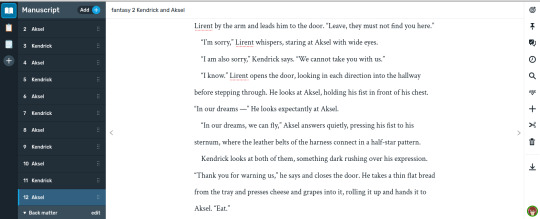
Reedsy bookeditor (https://reedsy.com/write-a-book) Browser based, works on Firefox on Android. Be aware that they also have a TOS that forbids pornography on publicly shared documents.
My current writing program. Just enough features to be helpful, not so many that I start fiddling. Writing is chapter based, exports to docx, epub, pdf. You can share chapters (for beta reading) with other people registered at Reedsy.
5.
Novelpad (https://novelpad.co/) Browser based.
Looks very promising, there's a youtuber with really informative videos about it (https://www.youtube.com/watch?v=mHN8TnwjG1g). I wanted to love it, but the editor didn't work on Firefox on my phone. It might now, but I'm reluctant to switch again.
------
So, this is my list. Please add more suggestions in reblogs.
2K notes
·
View notes
Text
Free Resource Library for Fiction Writers
Hey all, I maintain a free library of downloads and checklists for fiction writers which you can access through my website. This is what's current, but I update it and add stuff all the time. They're all printable, too! Woo hoo!
Download the Free Resource Library right here.

Get Access to the Free Resource Library on my website :)
Hope this helps!
/ / / / /
@theliteraryarchitect is a writing advice blog run by me, Bucket Siler, a writer and developmental editor. For more writing help, download my Free Resource Library for Fiction Writers (yep, this one!), join my email list, or check out my book The Complete Guide to Self-Editing for Fiction Writers.
942 notes
·
View notes
Text
““Perfectionism is the voice of the oppressor, the enemy of the people. It will keep you cramped and insane your whole life, and it is the main obstacle between you and a shitty first draft.””
— ― Anne Lamont
22 notes
·
View notes
Text
5 Tiny Writing Tips That Aren’t Talked About Enough (but work for me)
These are some lowkey underrated tips I’ve seen floating around writing communities — the kind that don’t get flashy attention but seriously changed how I write.
1. Put “he/she/they” at the start of the sentence less often.
Try switching up your sentence rhythm. Instead of
“She walked to the window,”
try
“The window creaked open under her touch.”
Keeps it fresh and stops the paragraph from sounding like a checklist.
2. Don’t describe everything — describe what matters.
Instead of listing every detail in a room, pick 2–3 objects that say something.
“A half-drunk mug of tea and a knife on the table”
sets a way stronger tone than
“There was a wooden table, two chairs, and a shelf.”
3. Use beats instead of dialogue tags sometimes.
Instead of:
"I'm fine," she said.
Try:
"I'm fine." She wiped her hands on her skirt.
It helps shows emotion, and movement.
4. Write your first draft like no one will ever read it.
No pressure. No perfection. Just vibes. The point of draft one is to exist. Let it be messy and weird — future you will thank you for at least something to edit.
5. When stuck, ask: “What’s the most fun thing that could happen next?”
Not logical. Not realistic. FUN. It doesn’t have to stay — but chasing excitement can blast through writer’s block and give you ideas you actually want to write.
What’s a tip that unexpectedly helped with your writing? Let me know!! 🍒
16K notes
·
View notes